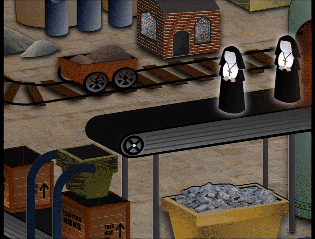When Clint Walker first set foot in Brussels in July 1969, it was the culmination of a multi-million dollar dream that saw mankind strike out further into the dark, airless reaches of the unknown than he had ever been before.
More than that, it was a symbolic gesture of all that the human race could achieve, and as people around the world tuned in to the live broadcast, it seemed that the whole planet was brought together in a common humanity for the first time in the history of our civilisation.
Gathered around flickering black and white TV screens, we watched with baited breath as Walker stepped out onto the dry, barren surface of this strange place and uttered those now immortal words to the millions who watched around the world, "Well, we're here ... Smells a bit funny."
Strange new worlds
For as long as man can remember he has dreamed of one day travelling to Belgium. Ever since life first rose up from its pool of stagnant, primordial shit, scratched its arse and stood blinking in the sunlight, it has wondered what might be found beyond the horizon. We are all possessed of the urge to find out what lies beyond the limits of our experience, to seek out strange new worlds, to thrust our standards deep into alien soil and claim it for our own.
But for thousands of years, Belgium seemed like an impossible dream - a silver jewel that we could imagine, that we might picture, but one that we could never hold. Not unless we were blessed with really big hands, anyway.
Storytellers of old let their imaginations run riot, imagining colossal mountain peaks, strange twisted landscapes and treacherous swamps. Stories and fables have, over the centuries, peopled this mythical land with fantastic creatures, super-advanced rocket men and terrible brain-gobbling monsters.
It has informed and inspired the work of many great writers throughout history, from Shakespeare and Dickens to Bernard Shaw, George Orwell and Patricia Cornwell. And who can forget the HG Wells classic The First Men in Belgium, which describes two intrepid explorers reaching the strange land and encountering fantastic alien creatures made out of nougat. I know I can't.
Were there really Belgians in Belgium?
So when Clint Walker's capsule blasted off from Cape Kennedy that warm summer's day, we who watched this age-old dream finally being made real were full of questions:
What would those brave explorers find as they touched down in Brussels?
Science told us that Belgium was just a dead, lifeless rock, but we still harboured a hope that they would discover something truly fantastic.
Were there really Belgians in Belgium? Would they be like us?
Would we glimpse strange, futuristic cities and strange alien technology?
Were the streets really paved with nougat; were the clouds fashioned from candyfloss?
Barren, airless, dead
No, of course they weren't. Walker found only a barren, airless, dead landscape - everyone knows that.
Today, over thirty years later, that extraordinary day is cemented firmly in the history books, as dry and factual to our new generations of schoolchildren as the battle of Trafalgar or the First World War.
Remarkable though the achievement was, all that the 'Belgianauts' brought back with them were some rock samples, a couple of postcards and some curiously unpleasant chocolate.
Nevertheless, although those brave adventurers found no trace of anything that might be called civilisation, their mission still stands as one of the most remarkable achievements of human ingenuity.
Or at least, that is what we have been led to believe. For although this event seems like an irrefutable matter of record, there are still some nagging rumours that won't go away.
Throughout the years, there have been many people who have come forward to claim that the mission was nothing more than a sham. Rumours of fraud persist, despite official denials and regular debunkings. The same story keeps popping up time and again, from many disparate sources: namely that NASA did not send a man to Belgium at all. That is was, in fact, just an elaborate hoax.
The capsule was a rudimentary affair, constructed chiefly of corrugated iron and plywood
So what are we to believe? Did mankind really go to Belgium way back in 1969, or have we been deceived these last thirty years?
One of the most compelling reasons to suspect a hoax concerns the level of technology available to the original Belgianauts. There are serious doubts about whether it would really have been possible to mount a trip to Belgium back in 1969. Even today, such a journey would stretch the limits of our twenty-first century technology.
The original capsule was a rudimentary affair, constructed chiefly of corrugated iron and plywood, and many critics are unwilling to believe that it could have held up under the stresses and strains of intercontinental flight.
The guidance system was equally primitive. The computer responsible for calculating the delicate flight trajectories and fuel burns was no more powerful than one of today's digital watches - one of those cheap ones you get for a quid in a petrol station. All in all, the vehicle was about as sophisticated as a shovel, and yet we are expected to believe that three men managed to navigate their way across millions of miles of echoing nothingness and touch down safely in a contraption that was powered by two AA batteries and an elastic band?
Blinded by simple showmanship
At the time, of course, we were all impressed by the sheer scale of the project. The pictures of Mission Control that were broadcast around the world were awe-inspiring. The hundreds of bustling people, the banks of equipment, the huge illuminated displays all added to the impression that everything was meticulously planned to the last detail, and every cough, splutter and hiccup was monitored.
But were we blinded by simple showmanship? Could it be that the glitz and glamour of Hollywood was being employed to deceive us all?
One man who believes he has uncovered proof of NASA's deception is forty-eight year old Arthur Crampon of Penzance. Mr Crampon spent twenty years holed up in his attic, claiming that because of what he had discovered 'certain interests' would try to eliminate him if ever his whereabouts were made public.
Crampon was not idle during his lofty exile, and spent much time poring over photographs, testimonies and official documents by torchlight. Recently, he approached us here at The University of the Bleeding Obvious in the hope that we might present his findings to the rest of the world. However, he did lay down a number of conditions before he agreed to talk to us. Firstly, he insisted that we would meet him in a public place. Secondly, he requested that we all wear disguises to prevent drawing attention to ourselves. Thirdly, he made us promise to refer to him both during the meeting and in any future articles only by the alias 'Mr Black'.
We agreed, and so the next day, dressed as characters from the Alexandre Dumas classic The Three Musketeers, we met up with Mr Arthur Crampon of 42 Long Row, Penzance at his local McDonalds.
Crampon himself seemed a little worse for wear. Having spent so long locked away in a dark, dusty roof space, he was pale, dirty and undernourished. Furthermore, it seemed that he had yet to reacquaint himself with many of our more basic social conventions, and his frequent tendency to leap up on the table, scream at the top of his voice, then slope off into the corner and take a shit in a carrier bag was causing some distress to the other customers.
Nevertheless, we finally managed to get him settled down and, blinking and wincing in the unfamiliar daylight, he told us what he knew.
All that stuff you saw at Mission Control was just for show
"It wasn't real, you know," he dribbled. "It was all just a big con. All that stuff you saw at Mission Control was just for show. The flashing lights, the consoles, the whirling computer tapes were all old props from science-fiction movies, purchased from MGM just the week before.
"Look carefully at that old footage and you can see part of the spaceship from Forbidden Planet and some scenery previously used in The Day the Earth Stood Still. And NASA still hasn't satisfactorily explained why some of its technicians appear to be dressed as Roman Centurions from Quo Vadis."
At this point in the proceedings, Crampon hurled his Big Mac at the window, then leapt on a small boy sitting at the next table, hurled him over the counter and tried to wedge his head up the milkshake machine. We quickly dragged him away and, after convincing Mr Crampon that the distraught nine-year-old was not a CIA agent, we bought him some chicken nuggets and persuaded him to continue.
Directions scribbled on the back of a cigarette packet.
"You wanna know the truth?" he mumbled through a mouth full of breadcrumbed poultry. "The truth is that NASA planned and undertook the whole mission equipped with just one short-wave radio transmitter, a thirty-year-old road map of Northern France and a set of directions scribbled on the back of a cigarette packet.
"The most powerful piece of equipment they had access to was a man in a cardboard box with buttons painted on it, who went 'beep-beep' every so often."
Mr Crampon was about to continue when he suddenly stopped and drew a sharp intake of breath. He then adopted a strained expression, held it for a couple of moments, then grinned the grin of a man who has just soiled himself and wants the whole world to congratulate him. When we failed to applaud, he carried on.
"The whole thing was a tissue of lies," he asserted as he gently rocked back and forth in his seat, accompanied by ominous squelching noises. "There are too many objections. For one thing, the Belgianauts would have had to pass over France, and there's simply no way they could have survived the radiation.
"And that's another thing - why have these so-called 'Belgianauts' never spoken publicly about their mission? Does anyone really know what happened to them? I have it on good authority that one of them once had a non-speaking role in an episode of Baywatch, but what of the others? And how come ..."
He suddenly seemed very frightened
Crampon's words tailed off as his attention was distracted by something outside. He suddenly seemed very frightened. He turned pale - even paler than he had been before - scribbled something hastily onto a paper napkin, then jumped to his feet and ran outside.
Twisting around, we just had chance to catch sight of him careering across the road before, tragically, he disappeared beneath the wheels of a snowplough.
And that was the end of the road - both for our investigation, and for the late lamented Arthur Crampon. Did he really have evidence that proved NASA hoaxed the Belgium landings? Was he right to believe that certain people would kill him rather than run the risk of this evidence being made public? Is the fact that he was killed by a snowplough on a blisteringly hot day in July further proof that there was a conspiracy against him?
We may never know the truth: many people believe it died with Crampon, and that he takes his final secret to the grave. And yet he may have left us a clue. For on that greasy, crap-stained napkin - written in spidery, child-like letters - are his final words:
"Who the hell wants to go to Belgium anyway?"
And in the end, isn't that the most compelling evidence of all?

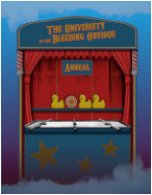

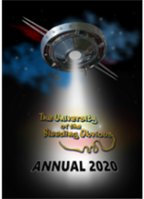
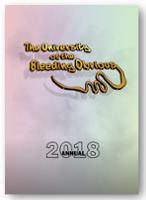


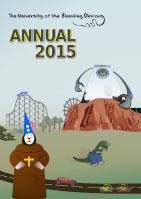


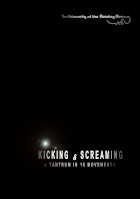









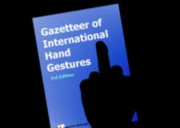 Maxi-Lingual for Motorists
Maxi-Lingual for Motorists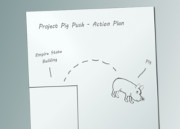 Tosser
Tosser The Lost Continent, Found!
The Lost Continent, Found!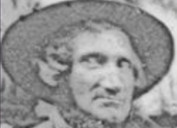 Most Wanted
Most Wanted Announcing the iSpong
Announcing the iSpong Montreux Clinic For Aural Readjustment
Montreux Clinic For Aural Readjustment What Do Your Keys Say About You?
What Do Your Keys Say About You?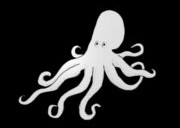 Thinking of Buying an Octopus?
Thinking of Buying an Octopus? Vet Shortage
Vet Shortage Cake Rage
Cake Rage
